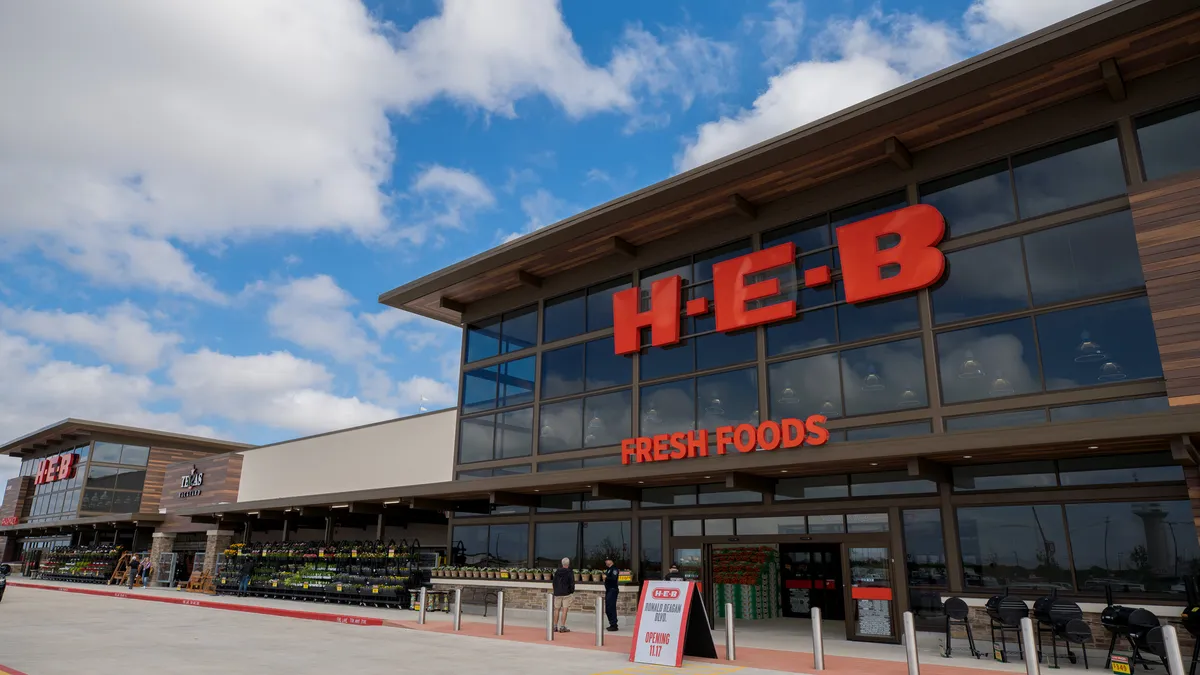Dive Brief:
- Next year, more than one in five adults will use a grocery app to order food at least once a month, according to a new forecast from eMarketer. That will equate to nearly 23 million people, up from 18 million grocery app users this year. More than 30 million adults may use an app to order groceries by 2022.
- According to eMarketer senior analyst Patricia Orsini, online grocery sales represent just 2.8% of all U.S. e-commerce sales, but grocery is one of the fastest growing categories.
- Shoppers are becoming more comfortable ordering groceries online or through an app, especially as retailers implement click-and-collect models and more grocers offer apps. But if the experience isn't positive from the beginning, Orsini warns that a consumer could be turned off for good.
Dive Insight:
Early adopters of grocery apps are familiar with the seamless experience and convenience of apps such as Instacart and Shipt. The Instacart app has long offered a multitude of features from easy checkout and tipping to custom shopping lists and coupons from several retailers. There are also reports of a scan-and-go feature that would allow Instacart shoppers to bypass checkout.
Shipt is also a favorite among grocery app users, especially for its customer service. Customers can communicate directly with their Shipt shopper in real time, and can leave notes in the app or get updates by text. Shipt continues to partner with many grocers, even after its acquisition by Target, but that may change in the future.
Both Instacart and Shipt come at a price, however, utilizing delivery and membership fees. Add gratuity to that, and some shoppers find the services cost-prohibitive.
While they are still major players, gone are the days when Instacart and Shipt cornered the grocery app market. A majority of grocers have introduced their own apps, which often integrate existing customer loyalty programs, deliver customized offers and coupons, and give people a sense of familiarity and trust. This may be the deciding factor in moving shoppers from in-store only to occasional app purchases. When customers can buy directly from their favorite grocer rather than relying on an outside party like Instacart or Shipt, they’ll probably be more inclined to try it.
Grocers may not need to extensively promote their apps as much as they simply need to let people know they exist. This could be as easy as a one-time discount for downloading the store's app. Grocery apps also need to be well-organized and simple. While it's great to have access to customer rewards, coupons, online purchasing, recipes and more in a single app — such as Food Lion's latest version — if it's not easy to follow, a customer may decline to use it. On the other hand, no one wants more than one app for a single retailer, which is likely why Target merged its Cartwheel app with the Target store app, and why Amazon integrated Prime into the Whole Foods app.
The obvious use-case for apps is outside of the store to place and track orders, and to find and apply coupons. But as the technology gets better and retailers can integrate more features, there are also in-store opportunities that may increase app use, such as customized in-store offers, the ability to check prices or locate items and possibly even mobile check out. Apps can also be used in an in-between manner as consumers pre-plan purchases or search coupons ahead of time using an app before they head to the store.









